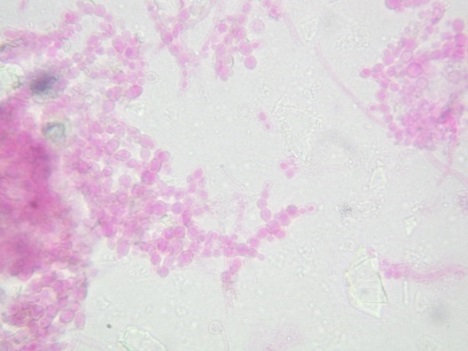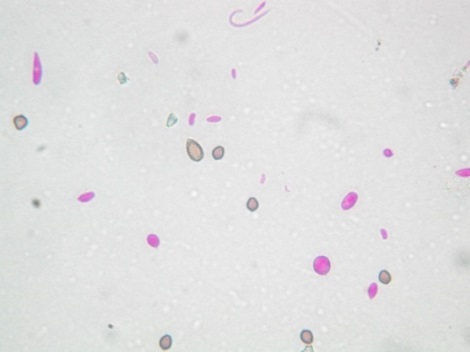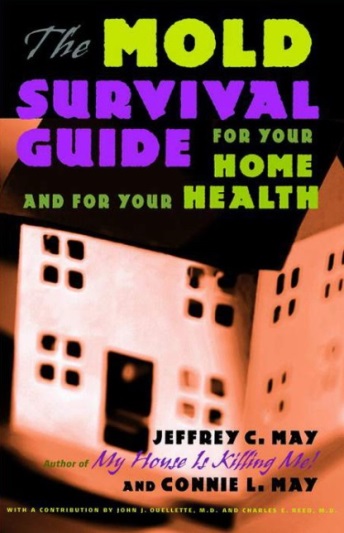Homeowner Newsletter: Fall 2017
©2017 Jeffrey C. May
The weather is turning cooler, and soon you will be turning on your heating system (if you haven’t done so already). At this time of year, when windows remain closed and people start spending more time indoors, we get calls from potential clients who are worried about the indoor air quality (IAQ) in buildings where they spend extended periods of time.
A number of these people worry about mold. Some may smell a musty odor, and others may be coughing or sneezing. They may have already had air sampling done for mold and then received laboratory reports that listed the genera (types) of molds present in the samples.
After receiving the test results, some people call me for a number of reasons:
- They don’t understand the relevance of the test results.
- The results don’t tell them where the mold growth may be located, so they don’t know what needs to be done to get rid of the mold.
- Or the callers had extensive mold-remediation work done. After the work was completed, post-remediation verification (PRV) testing confirmed that the air was free of living mold spores; and yet, people are still coughing and sneezing in the space in question.
Air sampling for particulate contaminants (like mold)
Air sampling can be useful in determining what may be in the air that people inhale, but samples taken from the air do not indicate the locations of potential sources of allergens and contaminants.
And the results of air sampling can be falsely reassuring. For example, when someone walks across a moldy carpet in a finished basement, spores will be aerosolized and will be detected in an air sample taken at the same time or within a few minutes.
If, on the other hand, no one has been in the space for a while, and there has been no foot traffic over the carpet, the air sample will probably not include spores that are in the carpet. Then people who live or work in the space will assume that the air is spore-free – but what happens when someone walks on that carpet?
Testing for volatile organic compounds (VOCs)
If a high total concentration of volatile organic compounds (TVOC’s) is reported, you still need to know which volatile organic compounds are present in order to identify potential sources.
Limonene and pinene (fragrances) will point you in one direction to find the source; propane will point you in another direction. That’s why when people ask me about VOC testing, I recommend the more expensive test that identifies what compounds are in the sample, rather than the lower-cost reading that just reports total VOCs in the air.
Don’t believe everything you read
Spore-trap test results are not always dependable, for a number of reasons.
You can never be sure of the qualifications of the microbiologist who examined the sample that was sent to the lab. A few studies were undertaken in which identical samples were sent to a number of different labs, one after another. The lab reports on spore types and their concentrations were so different that you would wonder if the labs had looked at the same sample.
Many mold samples taken are culturable, meaning that sampling is done for viable mold spores. Unfortunately, mold remains allergenic even when dead, so the fact that there are no viable mold spores present is not necessarily relevant for someone who has mold allergies. This is why I believe that samples for particulate matter should be examined by microscopy, so that both living and dead spores can be detected.
Only one or two labs that I know of report the presence of spore clusters, chains or conidiophores , which are indicative of the presence of mold growth rather than just settled spores that could have come from another location.

Conidiophores are the spore-forming structures, characteristic of a mold genus.
In a majority of reports, a comparison is drawn between the spore concentrations outside and the spore concentrations inside. This can be useful information, because often when the concentration of spores from a particular outdoor-type fungal species is high, spores from that species can be found inside a building. This is particularly true if the spores are small enough (basidiospores from mushrooms, for example) to flow through construction gaps.

It is not necessarily reassuring if indoor spore counts are lower than outdoor spore counts, however.
The biggest mold problems in buildings are usually caused by the presence of Aspergillus and/or Penicillium mold growth (in testing reports, the spores are often labeled “Pen/Asp spores”). If ten individual Pen/Asp spores are identified in an outdoor air sample, and only eight Pen/Asp spores are identified in an indoor air sample but found in a spore chain, then the indoor sample results are indicative of indoor mold growth, even if there are fewer spores. And in modern life, we spend most of our time indoors (sometimes up to 90%), so our exposures to indoor mold growth can be nearly constant.
Lastly, many lab analysts examine just a part of a sample (in some cases, as little as 10%), and then examine it only for the presence of mold spores. Important information about other potential allergens is therefore missing from the test results. I’ve sometimes found that people who think that their health symptoms are caused by exposure to mold spores are actually exposed to something else, like pet-dander particles or dust-mite allergens. So testing just for mold may not be altogether that useful in identifying what the allergen sources may be and where they are located.
What’s the goal?
When considering hiring someone to do mold or even more general IAQ testing, of course ask about the cost of the testing, how many samples will be taken, whether the samples are just air samples or a combination or air and surface samples, and whether an outdoor air sample will be taken as a control.
Ask whether the samples are just for living mold spores. If you are worried about gases or vapors in the air, ask the indoor air quality professional about the kind of test he or she conducts, and whether the test will identify particular gases or vapors, or just the overall total concentration of VOCs in the indoor air.
But also ask the big question: what’s the end goal of the sampling process?
The point of indoor-air-quality testing should be – no, must be – to identify potential sources of the problem as a first step in figuring out the solution. After all, why should you pay for a solution to an IAQ problem, when the problem source or sources have not yet been clearly identified?
Installing an air purifier is not a solution to an indoor air quality problem. An air purifier may be helpful, however, but generally only after the source of the problem has been eliminated.

Refer to our book for detailed discussion of mold growth, including where and why such growth occurs indoors.
Call us to discuss our services, or to schedule a phone consultation or site visit. And we’d be happy to help you better understand any IAQ test results if you’ve already had indoor-air-quality testing done in the spaces where you live or work.
